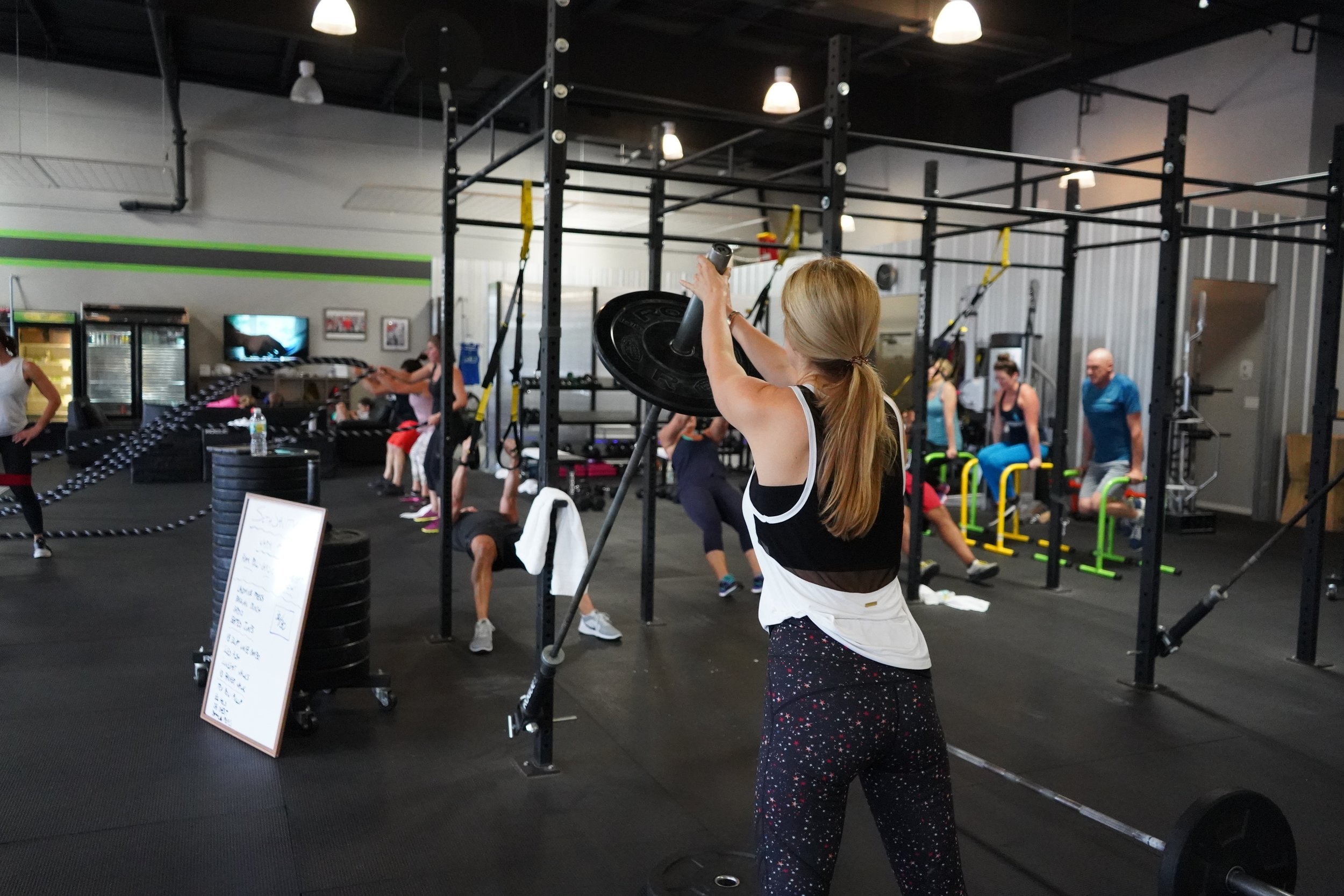
Whether you have never stepped foot in a gym or are a boot camp veteran, we want you to make the most of your workout. Last week we talked about how to make your boot camp experience “an epic success” – having fun, sticking with it, and reaching your fitness goals.
The biggest thing we see get in the way of any type of fitness success for those 30-60 years old is back pain. In fact, 80% of people will experience back pain in their life and anytime you ask more of your body than you have in awhile you are more prone to injury.
The main focus of back injury prevention in the gym is “proper form” and we could talk about that all day, but there are other things you need to take into consideration to protect your back at boot camp. AND many of these things you need to think about before you ever step foot in the gym.
-
Consistency
Just like anything, the more you do it the better you get at it. If you spend 6 months on couch watching Netflix and then hit every session of boot camp before your beach vacation, your body isn’t going to be very happy. Your muscles won’t be prepared for the load and your body won’t remember how to move properly through the exercises.
Consistency does not mean doing the same exercise every day. In fact, variation is the best way to improve your fitness. Consistency means doing something to move your joints and challenge your muscles on a regular basis.
-
Grading Exercise
The concept of graded exercise is that your program will increase the duration and intensity gradually over time. This is often seen in couch to 5K programs where people start with walking progressively longer distances at a faster pace, progress to walk/run intervals, and ultimately are able to run the full 5K. This applies to other exercises such as weight lifting and agility training as well.
Maybe you aren’t quite ready for plyometrics and need to perform the movements without your feet leaving the ground at first, or those weighted squats need to be done without weights until your body understands the movement better. This doesn’t mean “taking it easy”, but instead pushing yourself just a little more at each workout.
-
A Well Trained Coach
The help of well-trained coach is invaluable. They will be able to meet you where you are and continue to guide you safely along your journey. They will know when an exercise should be modified if you have a history of back injury and what exercise are important for you to include in order to improve the strength of your back.
The best coaches will listen and learn with you along the way. We love when coaches are willing to work alongside us as physical therapist to implement our therapy strategies into gym workouts.
-
Know Signs of a Problem
There are usually subtle signs that a back problem may by creeping up on you. The earlier you recognize these things the earlier modifications can be made, problems can be addressed, and further injury can be avoided.
These signs might include back stiffness when getting out of bed in the morning, low back soreness after sitting for long periods, back muscle spasms during certain exercises, abdominal muscle weakness, or urinary leaking during exercise. All of these things can be addressed giving you a better chance of averting future back pain.
-
Focus on Your Breath
Breathing plays a big role in how your back and abdominal muscles respond to various movements you perform in boot camp. The number one thing to remember is to breathe throughout your workout. Holding your breath will increase pressure in your abdomen causing a spinal disc to be more likely to be pushed out of place (called a disc herniation or disc bulge).
-
Move Throughout Your Day
The best way you can prevent back pain in general, or the type that creeps up once you start a new fitness routine, is to move frequently throughout your day. This keeps your blood flowing, muscles supple, and joint lubricated. Tight back muscles are always more likely to be injured.
When you show up to boot camp having been more active throughout your day, your body will show up for you as well.
Again, we love the concept of boot camp in that it addresses strength, endurance, balance, and agility. But, let’s set ourselves up for success by preventing aches, pains, and injuries.
Alongside your well-trained coach, a specialist physical therapist can be key to keeping you safe and active. This is especially true if you already have back pain or are worried about a previous injury catching up with you. Contact us today at the “Learn More” link below to inquire about how Physical Therapy can keep you in boot camp and working toward your goals.




